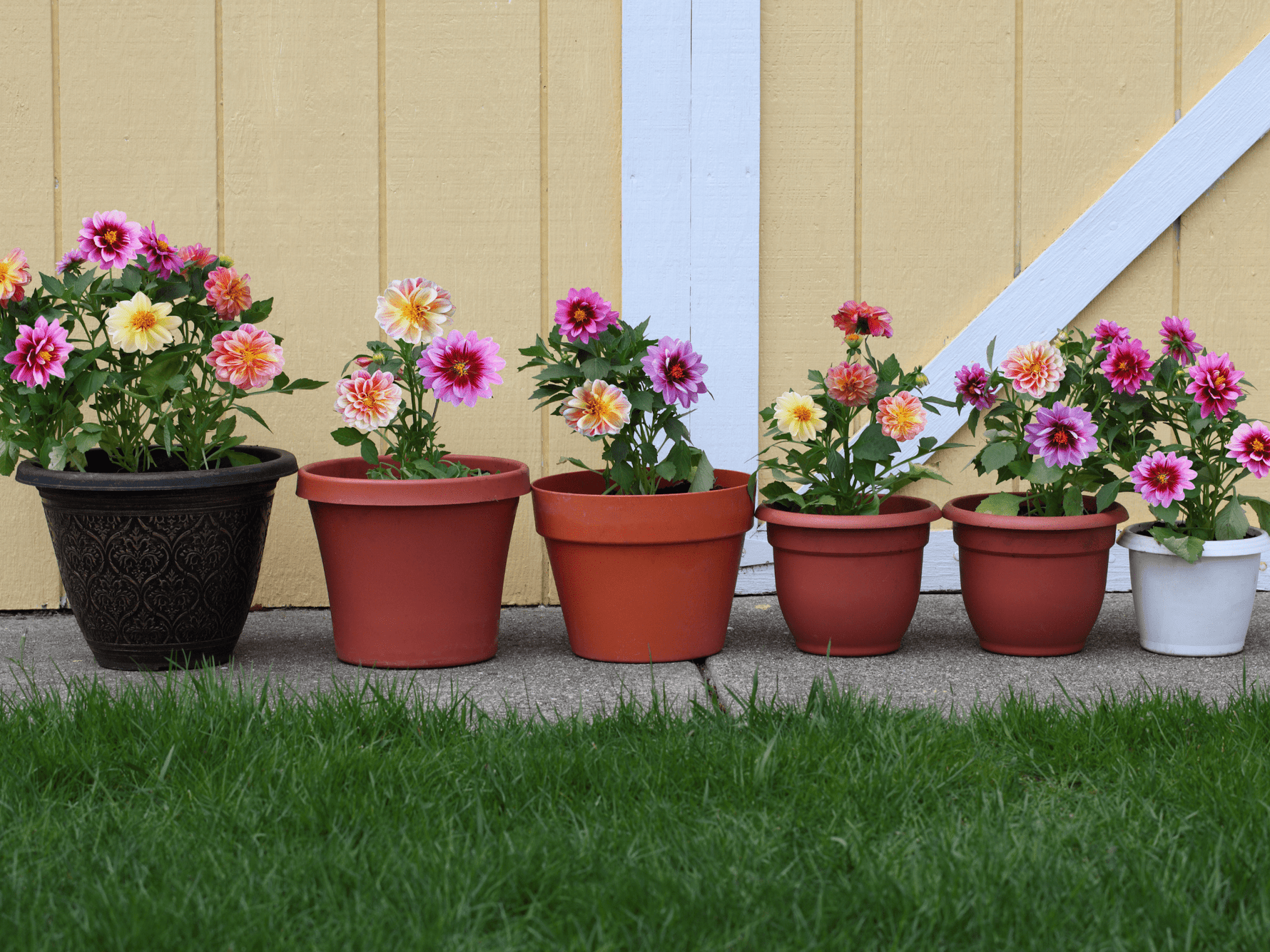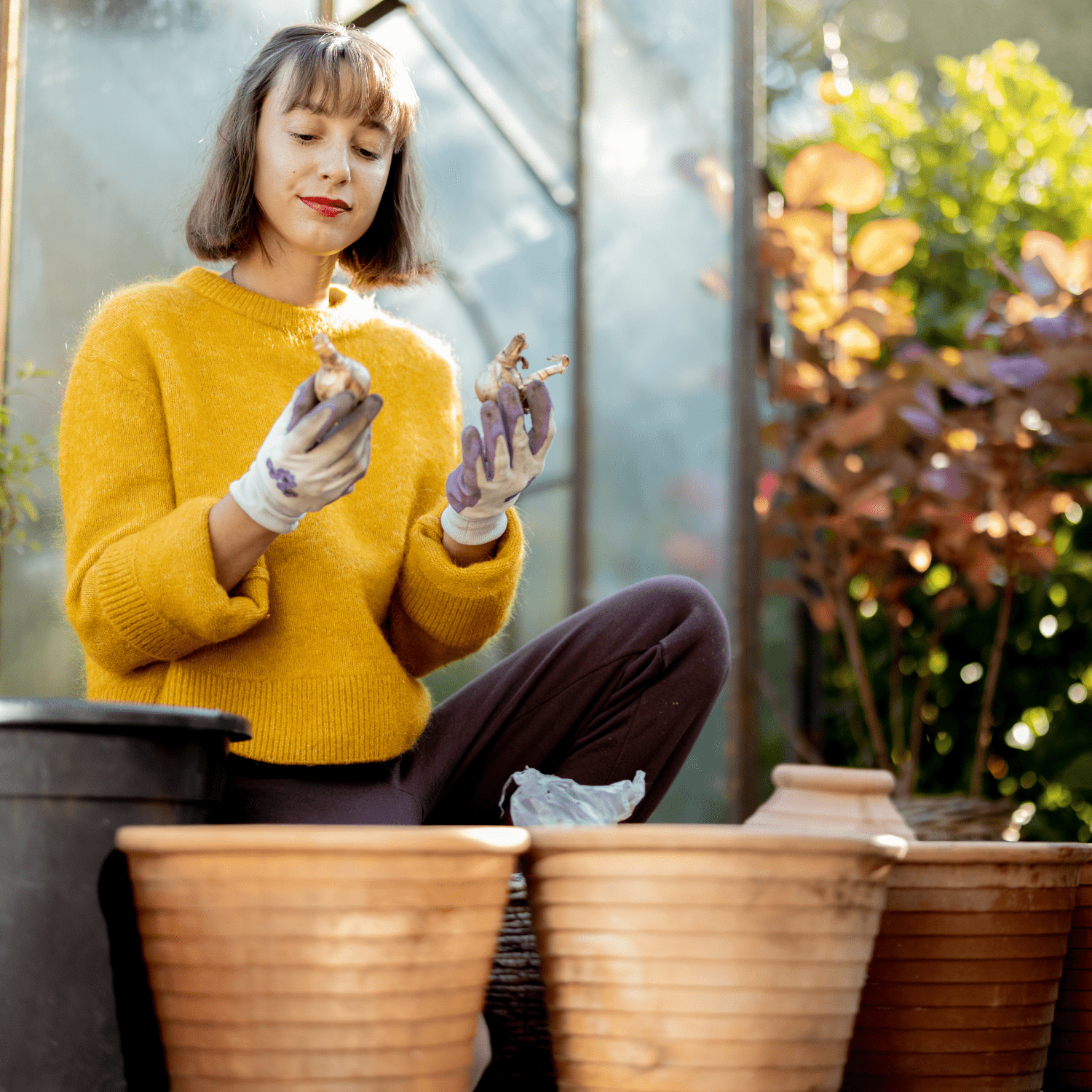Flower bulbs bring cheerful colors, and guess what? You can enjoy them even before spring! Flower bulbs are like tiny miracles waiting to happen. Chilling and forcing are like special tricks that help these bulbs bloom early, giving you a burst of colors when you least expect it. Picture chilling as a kind of winter vacation for bulbs. They get a bit cold (around 35°F to 45°F or 1.5°C to 7°C), and this helps them get ready for the big show.
Chilling and forcing bulbs might sound complicated, but don't worry – we'll walk you through it. By creating the right conditions, you can make bulbs bloom earlier than usual. With pre-chilled bulbs for forcing, you become the star of your own indoor garden play, bringing the joy of spring into your home. Let's dive into the world of pre-chilled bulbs for forcing, and discover the secrets to cultivating an early garden indoors.
Understanding chilling and forcing
What is chilling?
Chilling and forcing are techniques that mimic the natural winter conditions that bulbs require to bloom successfully. Chilling refers to the exposure of bulbs to cold temperatures, typically between 35°F to 45°F (1.5°C to 7°C), for a specific duration. This chilling period initiates the biochemical processes necessary for the bulb to develop properly.
What is forcing?
Forcing, on the other hand, involves encouraging bulbs to bloom earlier than they would in their natural environment. By carefully manipulating the chilling conditions and providing the right environment, you can coax your bulbs into producing flowers ahead of schedule.
Step-by-step guide to chilling bulbs
Selecting bulbs:
Choose high-quality bulbs from a reputable source. Opt for bulbs that are firm, free from disease, and appropriate for your climate.
Pre-chilling preparation:
Place the bulbs in a breathable container like a mesh bag or a perforated plastic bag.
Store the bulbs in a refrigerator or another cold storage area at a consistent temperature between 32°F to 50°F (0°C to 10°C).
Duration of chilling:
The chilling duration varies for different bulb varieties. For example, tulips generally require 12-16 weeks of chilling, while daffodils may need 15-17 weeks. Check the specific requirements for the bulbs you have.
How long do Tulips need to chill before forcing?
Tulips, those iconic harbingers of spring, require a specific chilling period to prepare for the forcing process. The chilling duration for tulip bulbs largely depends on the variety you've chosen. In general, tulips need about 12 to 16 weeks of chilling to develop properly and produce the stunning blooms we all adore.
However, it's crucial to note that different tulip varieties may have slightly different chilling requirements. Some may thrive with a shorter chilling period, while others might benefit from a more extended stay in the cold. To ensure optimal results, always refer to the specific guidelines provided for the tulip bulbs you've selected.
As you embark on the journey of forcing tulip bulbs, patience becomes your ally. The beauty that awaits is well worth the wait, and by understanding and respecting the chilling needs of your tulip bulbs, you set the stage for a spectacular indoor garden display.
How to force plant bulbs
Choose the right container for forcing bulbs: select a container with drainage holes to prevent waterlogging. You can use glass vases, shallow bowls, or specialized bulb forcing vases.
Prepare the growing medium for forcing bulbs: use a well-draining potting mix, and fill the container about two-thirds full. Moisten the soil, but avoid overwatering, as pre-chilled bulbs can rot in excessively wet conditions.
Planting the pre-chilled bulbs for forcing: place the pre-chilled bulbs on the soil surface, allowing them to touch each other without crowding. Cover them with more soil until just the tips are visible.
Watering pre-chilled bulbs for forcing: water the bulbs lightly after planting and maintain a consistent level of moisture throughout the forcing period.
Provide adequate light for forcing bulbs: place the containers in a cool, dark location during the initial stages of forcing. Once shoots emerge, move them to a bright, indirect light location.
Temperature regulation for forcing bulbs: maintain a temperature of around 60°F to 65°F (15°C to 18°C) for optimal growth. Cooler temperatures during chilling and warmer conditions during forcing contribute to successful blooming.
How long does it take to force bulbs?
Once your pre-chilled bulbs have completed their cold treatment and are transferred to a conducive environment for forcing, the countdown to blossoms begins. The duration it takes to force bulbs into full bloom can vary based on several factors.
On average, you can anticipate the emergence of blooms within 2 to 4 weeks after initiating the forcing process. However, this timeframe is a general estimate and may fluctuate depending on factors such as the bulb variety, environmental conditions, and the overall health of the bulbs.
Some bulbs may be eager to show off their colors sooner, while others may take a bit more time to unfurl their petals. Monitoring the growth progress, providing adequate light, maintaining proper temperature conditions, and keeping an eye on soil moisture levels all contribute to a successful forcing experience.
In essence, the journey from pre-chilling to forcing bulbs is a rewarding process that requires a balance of patience and care. As you witness the first signs of growth and the eventual burst of vibrant blooms, you'll find that the time invested in understanding and implementing these techniques is truly the key to a flourishing indoor garden.
Pre-chilled bulbs for forcing
Pre-chilled bulbs for forcing are like nature's time capsules, holding the promise of early spring blooms right at your fingertips. These specially prepared bulbs undergo a cool winter hibernation, carefully stored in a state of dormancy until it's time to awaken their vibrant potential. By subjecting these bulbs to a period of chilling – a winter vacation of sorts – in a cool, dark place (around 35°F to 45°F or 1.5°C to 7°C), garden enthusiasts can orchestrate a synchronized spectacle of colors indoors. This deliberate chilling process, tailored to the specific needs of each bulb variety, ensures that the plants receive the necessary signals to flourish when brought into the warmth of your home. Pre-chilled bulbs become your allies in defying the seasons, offering a burst of nature's beauty even in the midst of winter, making them an indispensable element for any indoor gardening enthusiast."
How to force bulbs in water
If you're feeling a bit adventurous, you can also force bulbs in water! Choose a container with enough space for the bulb to sit on top without fully submerging it. Add water to the container, making sure the bulb's base touches the water. Place the setup in a cool, dark spot for a few weeks until roots develop. Once shoots emerge, move the container to a brighter location, and watch your bulbs bloom without soil.
Forcing bulbs in water is a unique and captivating method to bring the beauty of blooms indoors. This process not only adds a touch of nature to your living space but also provides a front-row seat to the fascinating growth journey of your favorite flowers. Let's dive into the steps on how to force bulbs in water, creating a stunning display that will brighten up your home.
Selecting the right bulbs:
Begin by choosing bulbs that are suitable for forcing in water. Hyacinths, narcissus, and paperwhites are excellent options for this method.
Opt for pre-chilled bulbs for forcing to ensure they've gone through the necessary winter rest, preparing them for the blooming process.
Choosing the perfect container:
Select a clear glass or transparent container to allow you to witness the growth of roots and shoots. The container should have a wide enough base to provide stability for the growing bulbs.
Ensure the bulbs can be positioned just above the water, allowing the roots to reach down.
Preparing the bulbs:
If your bulbs aren't pre-chilled, you can still force them in water. However, it may take a bit longer for them to bloom.
Place the bulbs on top of pebbles or decorative stones in the container, allowing the roots to grow down into the water without submerging the bulbs completely.
Adding water and setting the stage:
Pour water into the container until it reaches just below the base of the bulbs. The roots will seek out the water, promoting healthy growth.
Place the container in a cool, dark location for the initial stage of forcing. This encourages robust root development.
Transitioning to light:
Once roots have developed, move the container to a bright, indirect light location. This signals the bulbs to start producing shoots and leaves.
Rotate the container regularly to ensure even growth, and keep an eye on the water level to maintain a consistent moisture level.
Enjoying the blooms:
In a few weeks, you'll witness the magical transformation as shoots emerge and vibrant blooms unfold.
Display your blooming bulbs as a centerpiece or in various containers for a charming indoor garden.
How to force Tulip bulbs indoors
Tulips are the stars of many gardens, and they can shine indoors too! After chilling your tulip bulbs, plant them in a pot with well-draining soil. Ensure the bulbs are covered but not crowded. Water them gently and keep the soil consistently moist. Place the pot in a cool, dark spot during the initial stages, and once shoots appear, move it to a brighter area with indirect sunlight. With proper care, you'll witness the vibrant beauty of tulips brightening up your indoor space.
Growing tulip bulbs indoors is a delightful venture that allows you to enjoy the iconic tulip blooms even before the arrival of spring. Here's a step-by-step guide:
Selecting tulip varieties: choose tulip varieties known for their suitability for indoor growth. Look for high-quality, pre-chilled tulip bulbs that are ready to grace your home with their vibrant hues.
Choosing the right container: opt for a container that provides ample space for the tulip bulbs and has drainage holes to prevent waterlogging. A well-ventilated container, whether it's a pot or a decorative planter, ensures a comfortable environment for your tulips to thrive.
Preparing the planting mix: use a well-draining potting mix, combining soil with organic matter. Fill the container with the mix, leaving enough space for the tulip bulbs to be planted at the right depth.
Planting Tulip bulbs: position the pre-chilled tulip bulbs on the soil surface, ensuring they are not too close but have room to grow. Cover them with additional soil until just the tips of the bulbs are visible.
Watering with care: after planting, water the tulip bulbs gently. Ensure that the soil remains consistently moist but not waterlogged, as tulips prefer a well-balanced watering routine.
Providing the right light: initially, keep the container in a cool, dark spot for about 2-3 weeks to encourage root development. Once shoots emerge, transition the tulips to a brighter location with indirect sunlight, allowing them to soak up the light needed for blooming.
Temperature control: maintain a room temperature around 60°F to 65°F (15°C to 18°C) for optimal tulip growth. This temperature range provides a cozy environment for the bulbs to transition from chilling to forcing, ensuring a successful and vibrant display.







